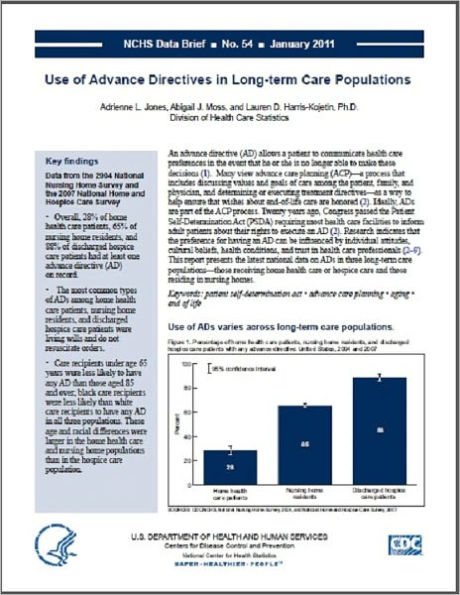An advance directive (AD) allows a patient to communicate health care preferences in the event that he or she is no longer able to make these decisions (1). Many view advance care planning (ACP)—a process that includes discussing values and goals of care among the patient, family, and physician, and determining or executing treatment directives—as a way to help ensure that wishes about end-of-life care are honored (2). Ideally, ADs are part of the ACP process. Twenty years ago, Congress passed the Patient Self-Determination Act (PSDA) requiring most health care facilities to inform adult patients about their rights to execute an AD (2). Research indicates that the preference for having an AD can be influenced by individual attitudes, cultural beliefs, health conditions, and trust in health care professionals (2–9). This report presents the latest national data on ADs in three long-term care populations—those receiving home health care or hospice care and those residing in nursing homes.



